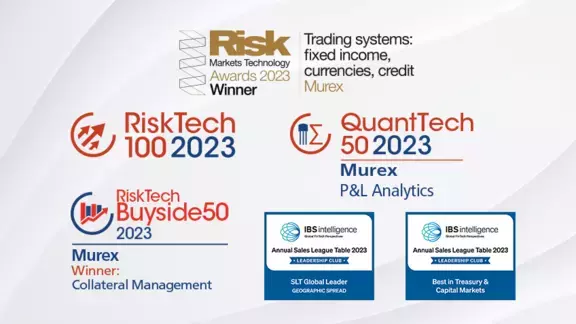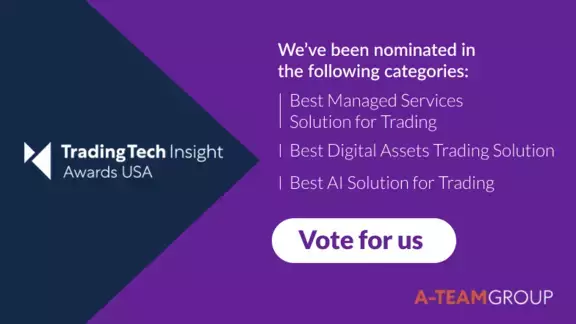-
Our solutions
- Our clients

With 300 clients and 60,000 users spread across 60 countries around the world, Murex has a truly international client base of capital markets participants.
view all case studies- Insights
- Who we are

Our awards highlight a strong level of customer satisfaction and acknowledge our market expertise.
Visit our awards webpage- Our partners
- Careers
Murex FX Options Product Spotlight: Product Catalog and Lifecycle Management
TARF, an increasingly important product, is a useful example of what a system should be able to manage front-to-back-to-risk
by Rémy LAGACHE, Head of FXO Trading Product Management
This is the fourth article in a series discussing FX options products and the different challenges around them.
In previous articles, we introduced the main challenges the FX options industry faces, zoomed in on the importance of reliable real-time portfolio management functionality, and described state-of-the-art models used to evaluate the products. This entry homes in on product catalog and lifecycle management.
A deep product catalog is available out-of-the-box within the MX.3 platform, covering exotic and vanilla products as well as streamlined lifecycle management, and meeting trader needs. If requested, the catalog can be extended further via an open, flexible API.
To better illustrate the challenges of managing a trade, in this article we describe the lifecycle of a product that sees expanding demand from FX market players: the Target Redemption Forward (TARF).
A TARF is a strip of synthetic forwards that enables a client to hit a more favorable strike rate compared to the equivalent market forward price, while exposing the client to leveraged loss on the downside and limiting its profit up to a certain target level. From a technical point of view, the product is very challenging: it is very difficult to represent its payoff.
The TARF, then, is a useful example of what a system should be able to manage front-to-back-to-risk, and how it might automate its lifecycle. Preferably, this management capacity would come with out-of-the-box functionality.
A TARF’s lifecycle starts with its payoff definition and negotiation. Given the complexity of the product, the TARF requires detailed agreements between counterparties that are then summarized in a term sheet. The ability to see a detailed term sheet in one screen paired with the ability to customize the payoff’s exotic features and dates when pricing or booking is immensely useful to front office users. MX.3 automatically generates these term sheets and sends them to the counterparty to simplify the negotiation. Once the trade is booked, a detailed confirmation is also automatically delivered. These automated processes are important to users in their trading platforms.
While the sales desk negotiates the price of a TARF, it benefits from the models we discussed in an article on modeling—either local volatility (LV) models or stochastic local volatility (SLV) models. These models are the ones used after the booking by traders to hedge the TARF afterward. Having a consistent model across pricing and risk management enables market competitive differentiation and enhances time-to-market.
At booking, pre-deal risk is handled. On top of the price the LV or SLV models provide, many add-ons can be included to handle credit systems, including XVAs. For more on the changing XVA landscape, read a Murex blog post introducing a webinar with expert analysis from Murex and the Commonwealth Bank of Australia.
Once booked, the TARF’s lifecycle continues with its position management and hedging activities. At this stage, P&L and greeks, such as delta, gamma and vega, need to be available in real time to facilitate proactive monitoring. Dedicated views that allow the trader to continuously monitor TARF-specific information, such as the remaining target, are also helpful.
At TARF fixing dates, when an FX publication is issued, the generation of the relevant cash flow or FX spot is performed automatically by the system and the client again receives automatic confirmation. If the target is reached, the TARF can be automatically killed, with the contract closed and settled.
Throughout the whole lifecycle of the TARF, manual intervention is now minimal. Thanks to this kind of automation, small- and medium-sized banks are entering the market and can either offer the TARF as a back-to-back business or fully handle its lifecycle.
For around a decade, TARF has been the domain of the biggest banks. Progressively, the space is seeing more diverse participants enter the fray.
Of course, the product catalog Murex offers is considerably wider than the TARF. It features both simple and exotic products, but also, crucially, combinations of them. For instance, it features unique products that are a combination of vanilla options and barrier options, and these products follow the same streamlined lifecycle as a TARF.
To improve the catalog even further, horizontal integration with other asset classes is beneficial and can bring useful synergies. For instance, combining FX options with FX cash and interest rate products can provide unique structuring capabilities and accelerate innovation in the financial engineering industry. Some of these products include the DCD (Dual Currency Deposit) and DCI (Dual Currency Investment). These kinds of structures can be handled within the MX.3 platform as a single, packaged product.
FX options desks are adapting to new and complex challenges and demands. We have focused on real-time portfolio management with an eye toward the importance of clearly illustrated portfolio exposure, daily process tracking, measurement of stresses and portfolio exposure against market moves; and a specific focus on activity of the day, harmonizing data individual users see and giving one concise picture. We have addressed how the trading desk depends on model quality, and how Murex’s offering supports increasingly complex, rigorous models.
For more insight and perspective, contact Murex. We would be excited to continue the conversation.
You might be interested in ...
- Our clients


